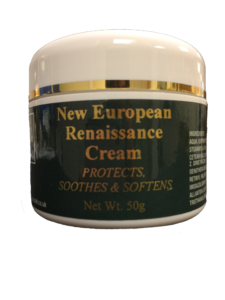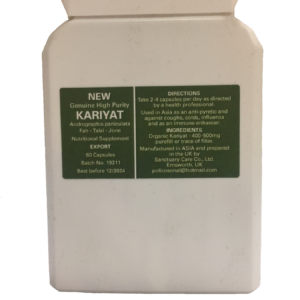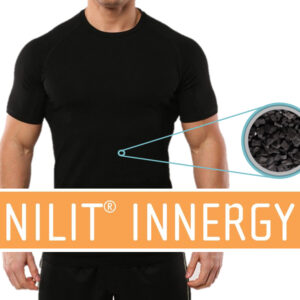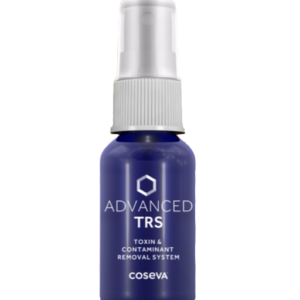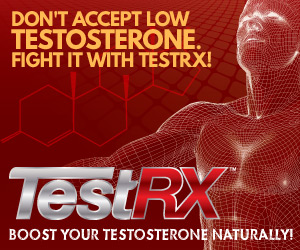GEROVITAL GH3 Supplement Benefits and Side Effects
A popular supplement in the 1950s, Gerovital GH3 Supplement is a nootropic that was once marketed as being an anti-aging treatment. Soon after its invention, it became wildly popular.
Main Method of Action:
Gerovital GH3 Formula uses procaine HydroChloride as a source of the”B”vitamin (para-aminobenzoic acid) and DEAE (diethylaminoethanol), a precursor to the “B” vitamin choline.
Procaine HCl is used because of the unique quality which the molecule exhibits, of being able to transfer through the damaged membranes of sick (diseased) cells.
The procaine HCl increases the electrical potential of the plasma membrane and the other membranes of the cell as well as supplying nutrients that are essential to initiate repairs.
Who took it?
Celebrities frequented Dr. Aslan’s Rumanian clinic during the 1950’s – 60’s, among them, German Chancellor Konrad Adenaner, Winston Churchill, Bob Hope, Cary Grant, Marilyn Monroe, Jack Benny and Prince Rainer.
Who’s it for?
When I asked Aslan how do you fight the aging, she answered:
“Old age is full of suffering and pain and I regard this as a parasite of life which develops slowly. I declared war on aging. As a gerontologist and a geriatrician you have to explain to healthy and sick people, what it means to grow old, and what they have to do in order to improve the quality of their life. My treatment is a solution and Gerovital-H3 is not only a treatment, it is a philosophy and a hope”.
Gerovital-H3 is indicated for people older than 40 years to retard the aging process and as a preventive and curative treatment for chronic degenerative diseases.
– Moderate and light depressive syndromes.
– In troubles concerning attention, concentrating, cognitive process and in balancing the neuro– vegetative distonias.
– Chronic fatigue syndrome.
– Sleep disorders
– Tegument dystrophies, trophic ulcers, atonic wounds
– Osteoarthritis, degenerating rheumatism, osteoporosis and during fracture consolidation periods
– Sexual management- improving sex drive
– Parkinson disease and Parkinson syndromes
Due to the inhibition of the generation of the super oxide radical, Gerovital-H3 is a powerful antioxidant, a free radical quencher
Outcome of Gerovital-H3 trials
Gerovital-H3 belongs to the class of drugs whose general action is upon the organism, especially in depression and overworking due to stress and over activity, also in arthritis and in other degenerative diseases.
The treatment has both prophylactic and curative purposes and it is used alone or in association with other drugs in case of depression, rheumatic diseases, Parkinson or systematic arteriosclerosis.
After Aslan’s Trials with GH3 this is what Doctor Aslan discovered:
– Desire to be active and more ability to cope with the environment.
– Improves affective tone, psychic and vegetative balance
– Diminished extra pyramidal rigidity, improved gait and exercise capacity
– Balanced endocrine functions with oestrogens reappearance and reactivation of androgens and sex drive
– The alleviation of chronic disease symptoms, arthritis, varicose ulcers
– Improves the Quality of Life retarding the rhythm of aging and having a role in preventing chronic diseases
Other Tests and Trial results!!!
Gerovital inhibits the production of monoamine oxidase (MAO) in the brain that begins to build up in a person over 45 and is directly linked to depression.
– As a prophylactic or preventative medicine, Gerovital has been found to immunize the body against infection. During an outbreak of influenza in 1959, patients at her clinic who had not received GH3 and contracted the disease had a mortality rats of 13.9 percent, whereas those who had benefit of GH3 suffered a mortality rate of only 2.9 percent. Some 67 percent of the patients who resisted the illnesses altogether had been on long-term treatment with Gerovital.
– Agricultural and industrial workers given GH3 missed 38 percent fewer workdays than their untreated co-workers.
– In 1965 tests on 1,840 rats showed that the treated animals lived 18 to 21 percent longer than the untreated.
– Tests on rats in a cancer experiment revealed that after treatment with Gerovital, cancer could not be artificially induced.
In the 1960s the drug was discredited as being ineffective as an anti-aging treatment and it has been prohibited from importation into the United States since 1982.
Why was it banned?
The scientific misunderstanding of GH3 comes through confusion regarding what was actually used in GH3 (Procaine or Procaine Hydrochloride) as well as its mechanism of action.
Dr. Aslan defined GH3 as procaine (the famous dental anaesthetic) stabilized with small amounts of benzoic acid, potassium metabisulfate and disodium phosphate.
Yet the various scientific detractors of GH3, none of whom had any clinical experience using GH3, claimed that the “stabilizers” were irrelevant and unnecessary. This of course is totally untrue!
On that basis, they performed various small scale, short term experiments using procaine alone, which, (surprise!) failed to confirm Aslan’s GH3 rejuvenation effects, and then they claimed that this proved Aslan’s thousands of patient years of clinical experience and multi faceted success using GH3 to be fraud, delusion, quackery etc. as per usual with ego-emotional lefttard scientific community.
In normal medical establishment style, they must “refute” claims they consider heresy. Nobody loves calling WITCH more than the well educated ego driven edu-brainwashed. Perhaps alternatively there is simply a well funded alterior motive at work? you be the judge.
Example 1: during the 1970’s Linus Pauling and Dr. Ewan Cameron had many clinical successes treating cancer with mega-doses of vitamin C!!!
Based on their clinical experience, they noted that the therapy only worked reliably on patients whose immune system had not been damaged by Chemotherapy or radiation therapy. The (infamous Mayo Clinic then ran trials using mega dose C with cancer patients all of whom had received Chemo and or X-ray treatment and found (surprise!) the “Pauling method” (which they did not follow) didn’t work.
Example 2: In the 1970’s the (infamous Sloan Kettering Cancer Hospital ran trials to test the cancer remedy Laetrile, significantly deviating from the carefully documented and published protocols followed by clinicians successful with Laetrile, and (surprise!) found Laetrile “didn’t work”.
Example 3: Also recently a trial by detractors of the Candida yeast syndrome using only the anti fungal drug Nystatin failed to find patient benefit while (surprise!) totally ignoring the need to accompany the drug with a low sugar diet (to starve the yeast) as is routinely done by doctors successfully treating Candida patients.
What is GH3?
Aslan’s Recipe:
Procaine HCl* 100.0 mg
Benzoic acid 6.0 mg
Potassium Metabisulfite 5.0 mg
Disodium phosphate 0.5 mg
How to take GH3?
It must be administered two hours after or before meals,
NOTE* It is not recommended in the following circumstances: severe liver disease, renal failure and severe arterial high blood-pressure. Also, it is not recommended in feverish states and in association with sulphamides, eserine and prostigmine.
How does it work?
Gerovital-H3 has a lipid lowering effect consisting of either diminishing the level of plasmatic lipoproteins and lipids, or increasing the membrane fluidity. This protection against osmotic hemolysis, or its antioxidant mechanism reduces the oxidative stress exerted on the membrane structure and on the low density lipoprotein (LDL).
Why does GH3 have to be stable?
The stability issue derives in part from the fact that under some conditions procaine hydrolyzes in solution into diethylaminoethanol (DHEA – a close cousin of DMAE) and the “B vitamin” para-aminobenzoic acid (PABA). It has been claimed that these two constituents (allegedly) provide the “benefit” of GH3.
Because DEAE is so similar to DMAE, and may even be metabolized into it in the body, there have been many “pseudo GH3’s” sold in health food stores which are nothing but physical mixtures of DMAE and PABA.
Yet GH3/KH3 have been shown to have similar properties possessed by neither DMAE or PABA.
One of the most important benefits of GH3 may derive from its role as a weak, reversible monoamine oxidase inhibitor (MAOI) – I would say blocker however as it’s not truly inhibiting it.
MAO is an enzyme in the brain that increases substantially with age. MAO’s degrade key brain neurotransmitters, especially noradrenalin (AKA – norepinephrine), dopamine and serotonin.
As a consequence, brain levels of these neurotransmitters tend to diminish with age, with concomitant loss of key brain functions (memory, attention span, drive, hormone regulation etc.) and an increase in depression.
During the first 240 minutes the two metabolites, diethylaminoethanol (DEAE) & para-amino-benzoic acid (PABA) are produced and absorbed. This result is due to procaine and esterase’s action of splitting GH3.
The absorption of DEAE & PABA takes place in a competitive manner, which means that the two metabolites compete for the active sites of the mechanism that governs the absorption. The age of the subject is what differentiates the absorption of DEAE, the older tissue having a greater affinity for it.
A deficiency in PABA can causes stress, digestive disorders, fatigue, headaches, irritability and graying hair. By stimulating the intestinal flora, PABA aids in the production of vitamin K, folic acid and thiamine.
DEAE aids in the production of choline which is a precursor of acetylcholine. DEAE is effective in relieving migraine and tension headaches.
Antioxidant and lipid-lowering effects. GH3 exerts an inhibition on the generation super oxide radical in a non enzymatic system.
Inhibitors of Mao? no not really, just a blocker …
In the late 1960’s famed University of California gerontologist Dr. Joseph Hrachovac reported that GH3 could significantly lower brain MAO activity.
And M.D. MacFarlane reported in the prestigious journal Federation Proceedings in 1975 that GH3 was a “weak, reversible, fully competitive inhibitor of MAO.”
GH3’s ability to serve as a weak, reversible MAOI is extremely important. The original pharmaceutical antidepressants were MAOIs, but they soon fell into disuse due to serious, even lethal side effects.
These pharmaceutical MAOIs were strong, irreversible MAOIs. As a consequence they could lead to the phenomenon called the “cheese effect,” whereby consuming certain foods and beverages rich in the amino acid derivative thyramine, while taking prescription MAOIs could lead to severe high blood pressure crises, even fatal strokes.
Because GH3/KH3 are weak, reversible MAOIs, they DO NOT exhibit this dangerous side effect.
Performance of GH3 in Trials?
A wide range of clinical trials was conducted in the 60s and 70s. Some results indicated that Gerovital was an effective treatment for Parkinson’s disease, others claimed that it helped alleviate depression. Still, other studies concluded that Gerovital had no value whatsoever as a treatment of the elderly, the diseased or the depressed.
Several clinical studies published in the journal Psychosonmatics in 1974 verified the clinical effectiveness of GH3 as an anti-depressant.
W.K. Zung of Duke University reported GH3 to be more effective than the standard anti-depressant Imipramine, while Cohen and Ditman reported that most patients receiving GH3 “felt a greater sense of well being and relaxation, slept better at night and many obtained some relief from depression and the discomforts of chronic inflammation or degenerative disease.”
And researchers M.R. Hall and colleagues noted in the journal Age and Aging in 1983, based on a trial with 247 healthy elderly subjects taking KH3 over 2 years, that “the results of this trial suggest that KH3 is an active substance…earlier work on procaine claimed that it improved recall, increased psychomotor activity and muscle strength in the elderly. We were surprised to substantiate these findings.
Another report from Vienna in 1970, a 5 month trial of KH3 in 120 people with an additional 112 receiving placebo, found that the KH3 group had a better memory for numbers, felt more alert and had superb concentration and hand – eye coordination, according to W. Czerwenka in the Vienna Medical Weekly Journal.
Other GH3/KH3 benefits reported in journals over the years include stabilizing brain cell membranes in ways that reverse “normal” age related membrane deterioration; increasing general intracellular metabolic rate, especially in muscle cells; and increasing intra cellular DNA levels necessary for optimal regeneration and repair of age induced cellular “wear and tear”.
Further Reading
I first learned of this important function of GH3 in 1984, from an obscure paper by Alfred Sapse in the generally ignored journal Medical Hypotheses: Stress, Cortisol, Interferon and Stress Diseases.
In this landmark 14 page paper with 62 references, Sapse made the case that cortisol, the “state of siege” hormone secreted by the adrenal glands, could all by itself cause a host of the common mental and physical problems related to stress, aging and degenerative disease.
In more recent years, the central role of cortisol in promoting degenerative disease and aging has been expounded by Dilman and Dean in their magnum opus The Neuroendocrine Theory of Aging and Degenerative Disease and world famous stress researcher Robert Sapolsky in his scientific papers and the book Why Zebras Don’t Get Ulcers; and most recently as a key theme of the 1997 book Brain Longevity by D.S. Khalsa (Warner Books).
Over a lifetime cortisol damages the brain, muscle, bone, skin and the immune system. A key regulatory center of the brain, the hippocampus, may gradually lose 20% of its cells due to its unique sensitivity to cortisol damage.
The hippocampus, a mid brain structure strategically seated above the hypothalamus/pituitary gland and below the cerebral cortex, plays a crucial role in cognition, attention, memory, emotional stability and sensory integration. It also plays a major role in regulating the hypothalamic – pituitary axis, which in turn regulates the entire endocrine (glandular) system of the human body.
The hippocampus is ravenged in Alzheimer’s dementia and is damaged to a lessor extent in “normal” aging. Ironically, it has been discovered that as the hippocampus is more and more damaged through a lifetime of stress induced cortisol secretion, the hippocampus loses its ability to regulate cortisol secretion. T
his in turn allows ever higher average cortisol levels, leading to a vicious spiral of ever less hippocampal cortisol control and ever more elevated chronic cortisol levels. Anything which safely and effectively protects the structure, function, health and stability of the hippocampus is at the core of promoting a healthy and vibrant middle and old age.
Sapse in his 1984 paper first compiled a list of substances which protect our bodies and brains from the ravages of stress induced cortisol excess.
His short list included Dilantin (Phenytoin), vitamin C, salicylates (aspirin, although copper salicylate is a better form in small [2-3 mg copper] doses), and Gerovital, GH3!
In his chapter on GH3, in Mind Food and Smart Pills, Ross Pelton lists a host of ailments, problems and diseases claimed to be cured or helped by GH3:
Over half of Pelton’s list, including senility, wrinkling skin, stress, depression, fatigue, poor memory, hypertension, sexual impotence (loss of desire), insomnia, heart disease, hormonal deficiencies (cortisol opposes, for example many of the benefits of insulin, testosterone, growth hormone and thymic hormones), Alzheimer’s disease and headache, are among the many ill effects of excess cortisol cited by Sapse.
Thus, the confusion and scepticism of many researchers as to how simple procaine, even if it is an effective MAOI, could lead to such a broad and seemingly unrelated host of benefits for body and mind, is now resolved.
It is through GH3/KH3’s antagonism of the broad spectrum degenerative effects of stress induced chronic cortisol excess, so common in the modern world, that GH3/KH3 can claim to be not just the original but also still one of the most important anti-aging drugs. And this is why it’s one of the cornerstones of my personal anti-aging program.
By adding buffering agents and other chemicals Dr. Aslan developed a hybrid product (Gerovital H3) that transformed procaine into a new medicine. As she continued her tests she found that when she prescribed the compound Gerovital for arthritis, the symptoms of a host of other ailments were also relieved. She began using it to straighten gnarled limbs and found that she also induced a new youthfulness in her patients.
Not only would they abandon their beds and wheel chairs, but their circulation improved, liver spots disappeared and their skin became more elastic. Bald men began to grow hair again and gray haired men and women enjoyed a dramatic re pigmentation of their hair. Many elderly patients were retrieved from the nether world of senility and the depression that often accompanies old age was replaced by a youthful enthusiasm and vigor.
Dosage and Precautions:
The traditional program for GH3 is to take one GH3 (or two KH3) once or twice daily on an empty stomach. Those who find it too stimulating should use a lesser dose and/or not take it later than early afternoon. Due to its MAOI effect, GH3/KH3 energizing tendency may make it necessary to take a periodic “holiday” from use, the original protocol was 5 days off each month.
GH3/KH3 may also amplify the stimulating effect of other “neuro-energizers” which increase dopamine and/or noradrenalin activity, such as deprenyl, L-dopa, modafinil (adrafinil), Hydergine or DLPA/phenylalanine/tyrosine. It is especially important to take periodic GH3 breaks if you are using such “neuro-energizers.”
Those known or suspected to be procaine allergic should avoid GH3/KH3. People with cortisol deficiency problems or who are using medically prescribed cortisol or prednisone therapy should use GH3/KH3 cautiously if at all. Those using psychiatric drugs, such as tranquilizers, anti-epileptics, anti-depressants etc., should also be wary of using GH3/KH3.
GH3 as a Cream!
GH3 is also useful in the treatment of body ailments, such as systemic arteriosclerosis. Heart ischemia, cerebral arteriosclerosis and Parkinson’s disease. Therefore, antiaging gerovital GH3 health supplement is an excellent way of avoiding premature aging and attaining wrinkle-free skin.
The best part of this antiaging GH3 hormone is that it is not a clinical procedure where the patient has to undergo a cosmetic operation to get the desired results. It makes GH3 a safe drug that is free from any toxic as in the case of botox that is the byproduct of bacteria. Given the utility of GH3, it is a wonder drug that has many possible uses.
GH3 products will help you immensely by increasing your body’s neurotransmitters like dopamine, serotonin and norepinephrine. These neurotransmitters will help you in decreasing your anxiety and will provide high energy levels. Therefore, GH3 is a useful health supplement that will help you in keeping healthy skin and fit body. Taking antiaging GH3 hormone supplement is better in comparison to a botox injection. So, next time you think of making your skin youthful, go for the antiaging GH3 hormone.


